Related Research Articles
Year 1471 (MCDLXXI) was a common year starting on Tuesday of the Julian calendar.
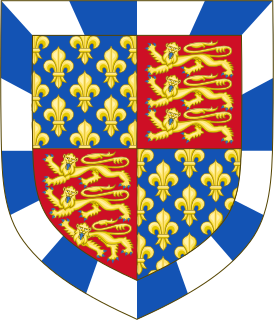
Joan Beaufort, was the youngest of the four legitimised children and only daughter of John of Gaunt, 1st Duke of Lancaster, by his mistress, later wife, Katherine Swynford. She married Ralph de Neville, 1st Earl of Westmorland and in her widowhood became a powerful landowner in the North of England.
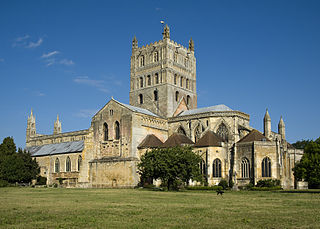
The Abbey Church of St Mary the Virgin, Tewkesbury–commonly known as Tewkesbury Abbey–is located in the English county of Gloucestershire. A former Benedictine monastery, it is now a parish church. Considered one of the finest examples of Norman architecture in Britain, it has the largest Romanesque crossing tower in Europe.

The Order of Friars Minor Capuchin is a religious order of Franciscan friars within the Catholic Church, one of Three "First Orders" that reformed from the Franciscan Friars Minor Observant, the other being the Conventuals. Franciscans reformed as Capuchins in 1525 with the purpose of regaining the original Habit (Tunic) of St.Francis of Assisi and also for returning to a stricter observance of the rule established by Francis of Assisi in 1209.
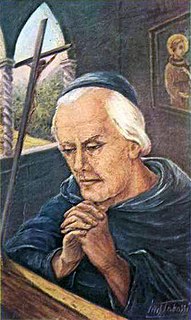
Thomas of Celano was an Italian friar of the Franciscans as well as a poet and the author of three hagiographies about Francis of Assisi.

The Poor Clares, officially the Order of Saint Clare – originally referred to as the Order of Poor Ladies, and later the Clarisses, the Minoresses, the Franciscan Clarist Order, and the Second Order of Saint Francis – are members of a contemplative Order of nuns in the Catholic Church. The Poor Clares were the second Franciscan branch of the order to be established. Founded by Saints Clare of Assisi and Francis of Assisi on Palm Sunday in the year 1212, they were organized after the Order of Friars Minor, and before the Third Order of Saint Francis for the laity. As of 2011, there were over 20,000 Poor Clare nuns in over 75 countries throughout the world. They follow several different observances and are organized into federations.

Agnes of Bohemia, O.S.C., also known as Agnes of Prague, was a medieval Bohemian princess who opted for a life of charity, mortification of the flesh and piety over a life of luxury and comfort. Although she was venerated soon after her death, Agnes was not beatified or canonized for over 700 years.

Lawrence of Brindisi, born Giulio Cesare Russo, was a Roman Catholic priest and a theologian as well as a member of the Order of Friars Minor Capuchin. An accomplished linguist, in addition to his native Italian, Lawrence could read and speak Latin, Hebrew, Greek, German, Czech, Spanish, and French fluently. Lawrence was ordained a priest at the age of 23. Lawrence was beatified on 1 June 1783 and canonized as a saint on 8 December 1881.
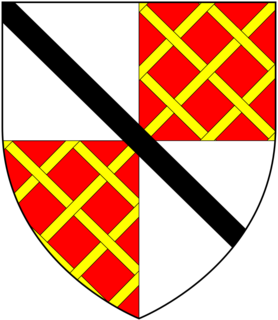
Thomas le Despenser, 2nd Baron Despenser, 1st Earl of Gloucester KG was the son of Edward le Despenser, 1st Baron le Despencer, whom he succeeded in 1375.

Quin Abbey, in Quin, County Clare, Ireland, was built between 1402 and 1433 by Sioda Cam MacNamara, for Fathers Purcell and Mooney, friars of the Franciscan order. Although mostly roofless, the structure of the abbey is relatively well preserved. There is an intact cloister, and many other surviving architectural features make the friary of significant historical value.

The Order of Saint Augustine, abbreviated OSA, is a religious mendicant order of the Catholic Church. It was founded in 1244 by bringing together several eremitical groups in the Tuscany region who were following the Rule of Saint Augustine, written by Saint Augustine of Hippo in the fifth century.
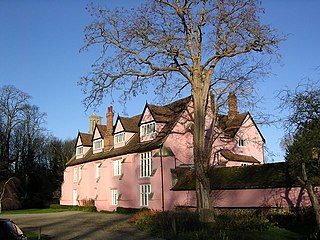
Clare Priory is a religious house in England, originally established in 1248 as the first house of the Augustinian Friars in England. It is situated on the banks of the River Stour, a short distance away from the medieval village of Clare, Suffolk. The friary was suppressed in 1538 and the property passed through many hands until it was again purchased by the Augustinian friars in 1953. Today the Priory offers modern retreat facilities for guests.

Colette of Corbie, P.C.C. was a French abbess and the foundress of the Colettine Poor Clares, a reform branch of the Order of Saint Clare, better known as the Poor Clares. She is honored as a saint in the Catholic Church. Due to a number of miraculous events claimed during her life, she is venerated as the patron saint of women seeking to conceive, expectant mothers, and sick children.

Philippa de Mohun was Duchess of York, as a result of her third marriage to Edward of Norwich, 2nd Duke of York (c.1373–1415), Lord of the Isle of Wight, a grandson of King Edward III (1327–1377). She succeeded her third husband as Lady of the Isle of Wight (1415–1431).
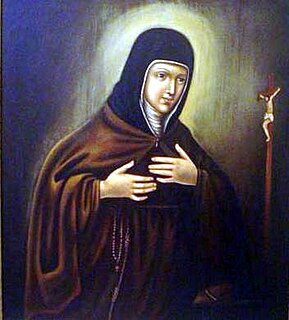
Camilla Battista da Varano O.S.C.,, from Camerino, Italy, was an Italian princess and a Poor Clare nun and abbess. She is venerated as a saint in the Catholic Church.
Duchy of Pomerania-Barth was a feudal duchy of the Holy Roman Empire located in Western Pomerania that existed in the Middle Ages between 1376 and 1478, and between 1569 and 1625. The state consisted of its capital, Barth, and nearby areas. Duchy had separated from Pomerania-Wolgast in 1376 and was incorporated into Duchy of Pomerania in 1478. It was reestablished in 1569 by separation from Pomerania-Wolgast-Stolp and existed until 1625, when it was incorporated into Duchy of Pomerania.
When referring to Roman Catholic religious orders, the term Second Order refers to those Orders of cloistered nuns which are a part of the mendicant Orders that developed in the Middle Ages.

The Charterhouse was a Carthusian monastery and almshouse in Kingston upon Hull, England, built just outside the town's walls. The hospital building survived the Dissolution of the Monasteries; the priory was destroyed in 1538. The structure of the hospital was destroyed before the first siege of Hull during the English Civil War. A replacement was built in 1645, which was replaced again in 1780; the buildings function as an almshouse with an attached chapel, and remain in use to the present day (2012).
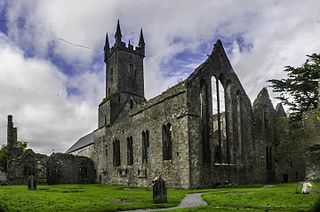
Ennis Friary was a Franciscan friary in the town of Ennis, County Clare, Ireland. It was established in the middle of the 13th century by the ruling O'Brien dynasty who supported it for most of its existence. Following the suppression of the monasteries in the 16th century, the friary continued to function for a while despite the loss of its lands. In the early 17th century, the buildings were handed over to the Church of Ireland as a place of worship. It was used as such until the late 19th century. After the construction of a new Church of Ireland building, the friary fell into ruin. Managed by the Office of Public Works since the late 19th century, it was formally returned to the Franciscan Order in 1969.

The Abbey of the Minoresses of St. Clare without Aldgate known also variously as the "Abbey of the Blessed Virgin Mary, Aldgate" or the "House of Minoresses of the Order of St Clare of the Grace of the Blessed Virgin Mary" or the "Minoresses without Aldgate" or "St Clare outside Aldgate" or the "Minories, London" was a monastery of Franciscan women living an enclosed life, established in the late 13th century on a site often said to be of five acres, though it may have been as little as half that, at the spot in the parish of St. Botolph, outside the medieval walls of the City of London at Aldgate that later, by a corruption of the term minoresses, became known as The Minories, a placename found also in other English towns including Birmingham, Colchester, Newcastle upon Tyne and Stratford-upon-Avon.
References
. Dictionary of National Biography . London: Smith, Elder & Co. 1885–1900.